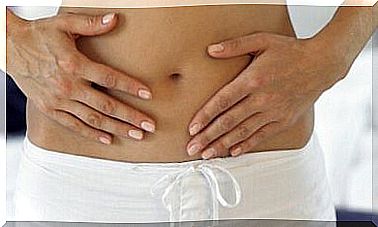The Most Common Causes Of Physical Pain

The causes of physical pain can be many and varied. This is such a common symptom that it could actually be attributed to any disease. It also represents one of the main reasons for medical consultation.
It is defined as a subjective experience with an emotional impact and a deterioration in the quality of life of the patient and those close to him. This latter aspect is particularly evident in chronic cases.
On numerous occasions the course of pain is acute, as in the case of infections. In other cases, however, it can extend over time until it becomes chronic. Today we are talking about ten causes of physical pain that occur relatively frequently among the general population.
Frequent causes of physical pain

1. Influence
Influenza is an acute respiratory disease caused by influenza A or B viruses, which mainly affects the winter season. Its diffusion is worldwide: in fact, there are no geographic areas that are immune to the epidemics typical of the cold seasons.
Typically, the infectious process presents no complications. However, it is associated with higher mortality in some at-risk groups of the population, such as people with chronic diseases and immunosuppressed. For these categories, annual preventive vaccination is recommended.
In patients with uncomplicated influenza, the disease can last for a week or more. It manifests itself through respiratory symptoms, such as mucus formation, sore throat and cough, along with fever, headache, myalgia (muscle pain) and weakness. Inflammation, particularly in the throat, chest and lungs, can also be painful.
2. Fibromyalgia
Fibromyalgia is the most common cause of chronic generalized muscular and skeletal physical pain. It occurs in a percentage of the population ranging from 2% to 8%. The pain is often accompanied by fatigue, memory difficulties and sleep disturbances. The etiology is unknown.
Its presence is observed more frequently in women between the ages of 20 and 55. Upon physical examination, patients have no abnormalities, except for generalized soft tissue sensitivity. Radiological and laboratory tests give normal results.
The treatment is aimed at reducing the main symptoms of the disorder, for which different drug therapies are used and not. Rehabilitation sessions and assistance from mental health professionals are helpful.
3. Chronic fatigue syndrome
Chronic fatigue syndrome is a disease with an uncertain cause. Since it is chronic and involves a large part of the body, it represents a disabling disorder that drastically limits the activities of patients.
Its diagnosis is often made late and with difficulty due to the lack of studies capable of confirming it. People with this problem experience headaches, muscle and joint pain.
The National Academy of Medicine has developed a series of criteria to facilitate diagnosis. These include a substantial deterioration in the ability to carry out occupational, educational, social or personal activities that persists for more than 6 months and is accompanied by fatigue that does not disappear with rest.
4, Lupus among the causes of pain
Lupus is an autoimmune disease (i.e. the immune system attacks its own tissues), chronic and of unknown cause. It can affect any organ of the body, without focusing on a particular system. Due to the damage and inflammation, physical pain is a common phenomenon.
In addition, the patient may experience fatigue, skin rashes, fever with no apparent cause, swelling or redness of the area surrounding the joints, seizures and sensitivity to sunlight. Treatment is complex because the response to drugs is variable.
5. Lyme disease
Lyme disease is a tick-borne infection. It is characterized by the appearance of characteristic skin lesions in the form of migrating erythema (reddish spot on the skin). There are pains in the large joints, fatigue, headache and even muscle disorders such as stings.
6. Infectious mononucleosis
Infectious mononucleosis is caused by the Epstein-Barr virus. It is also called “kissing disease”, because in most cases it is transmitted through saliva.
It is characterized by the presence of fever, pharyngitis, fatigue, inflamed lymph nodes, headache, general malaise and generalized physical pain.
Its course is self-limited, but the exhaustion of the patient’s physical energies is very frequent. During the period of maximum expression of the pathology, it becomes impossible to carry out elementary activities.
7. Rheumatoid arthritis
Rheumatoid arthritis is a chronic, systemic disorder of unknown origin. We know that the underlying process that generates it is autoimmunity, but the situations that trigger the manifestation of symptoms are varied.
It mainly affects the joints, in a symmetrical way, and leads to their destruction, causing deformities. In addition to pain, the patient typically experiences fatigue, myalgia, fever, weight loss and depression. The chronic condition and the evolution into acute episodes make the therapeutic approach complex.
8. Multiple sclerosis
Multiple sclerosis is a demyelinating disease, which means that it damages the myelin layer that covers the nerve fibers. It is autoimmune and is the most common of the diseases of the central nervous system.
The patient presents with pain, tingling and other abnormal sensations. Other symptoms include: weakness, fatigue, blurred vision, temporary or permanent blindness, difficulty walking or standing, and memory impairment.
9. Dehydration among the causes of physical pain
Dehydration occurs when the body loses more water than it ingests through food or drink. It can be caused by vomiting, diarrhea, high fever, or diuretic drugs. Children and the elderly are the categories most likely to suffer from it.
Body fluids are essential to ensure the proper functioning of the body. A decrease, therefore, causes various symptoms, such as excessive thirst, poor urination, dry mouth, chapped lips, confusion and fatigue.
It is one of the causes of physical pain because dehydrated muscles produce toxic substances that irritate the nerve endings.

10. Drug-induced myopathies
There is a long list of medications, as well as drugs, which can cause physical pain. Manifestations range from mild muscle pain and weakness to severe chronic injury with impaired renal function.
Some examples of drugs and drugs that can cause myopathies are alcohol, cocaine, glucocorticoids, statins, antipsychotics, colchicine, and antiretrovirals. This side effect does not always appear, but it is advisable to pay attention to it if you take the listed drugs.
Causes of physical pain can be varied
The causes of physical pain are so varied that it would be impossible to list them all. We have presented the most frequent, therefore those that most afflict the world population.
If you have persistent pain that you cannot explain the cause of and that affects the quality of your life, you should see your doctor. It is important to go back to the origin in order to adopt a suitable treatment for the case.
To eliminate any doubts, avoid self-medication and make an appointment with your family doctor.









